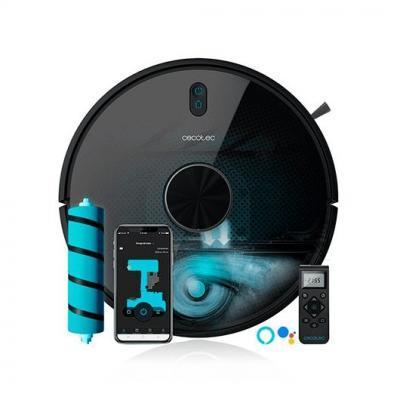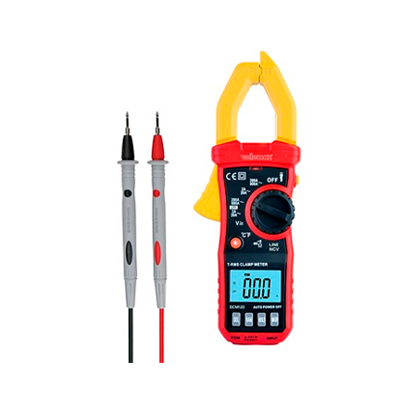
A good gaming experience depends on much more than the power of your graphics card; it also has to do with how smoothly the game images are displayed on the screen.
Here comes the refresh rate, one of the crucial components that can significantly improve your gaming experience, turning a shaky and blurry game into a smooth and immersive one.
In this article, we will explore what the refresh rate is, its importance for gaming, and the best options for gaming.
What is a monitor's refresh rate?
The refresh rate, measured in Hertz (Hz), indicates the number of times per second that a monitor updates the images on the screen. A higher refresh rate means that the monitor can update the displayed image more frequently in a second, resulting in smoother and less blurry motion, especially in fast-moving images.
Additionally, the refresh rate has implications for visual comfort. Lower refresh rates can cause visual fatigue during prolonged use, while higher refresh rates tend to be more comfortable for the eyes.
Essentially, the refresh rate is a measure of how quickly a monitor can redraw the entire screen. A 60 Hz monitor redraws the screen 60 times per second, while a 120 Hz monitor does it twice as fast. As the numbers increase - 144 Hz, 165 Hz, and beyond - the screen becomes increasingly capable of handling fast-paced rhythms without resulting in distortions like tearing or ghosting.
Refresh Rate vs. FPS: What's the Difference?
While the refresh rate measures how often a monitor can display a new image, the frame rate, often referred to as frames per second (FPS), measures the number of individual images (frames) that the computer's Graphics Processing Unit (GPU) can produce and send to the monitor each second.
FPS depends on the power and efficiency of the GPU, as well as the complexity of the content being processed. In games, a higher FPS means that the game's animations and movements are processed more smoothly, contributing to a more immersive experience.
Ideally, the monitor's refresh rate should be in sync with the FPS output by the GPU for a smoother experience. If the FPS exceeds the monitor's refresh rate, it can lead to screen tearing, where multiple frames are displayed at the same time. On the other hand, if the FPS is too low, even a monitor with a high refresh rate won't be able to compensate, resulting in a less fluid visual experience.
HOW DOES REFRESH RATE AFFECT GAMES?
The refresh rate affects both visual clarity and the responsiveness of the game. A higher refresh rate allows for smoother motion on the screen, making it easier to track objects in fast motion without the blurring that can occur with lower refresh rates.
This clarity reduces the lag between user input and what is displayed on the screen, providing a more reactive gaming experience. This is crucial in competitive games such as FPS (first-person shooters), where even milliseconds can make the difference between victory and defeat.

COMMON REFRESH RATES FOR GAMING
Nowadays, there is no shortage of excellent gaming monitor options available for all budgets. As expected, generally, the higher the refresh rate, the higher the price of the monitor. Therefore, one must consider this balance between price, refresh rate, and intended use.
Let's start at the most basic level: 60 Hz. Besides being one of the most common refresh rates, it is surprisingly capable for general use and casual gaming. Therefore, a 60 Hz monitor with a 4K resolution can result in an excellent gaming experience for certain types of games.
The transition to 120/144/165 Hz marks the biggest leap in visual smoothness and gaming performance. Gaming monitors with 120 Hz, 144 Hz, or 165 Hz are an excellent choice for gamers seeking a good balance between responsiveness and price.
Beyond 165 Hz, including 240 Hz and even 360 Hz, the improvements in gameplay smoothness continue, but with less noticeable results. These ranges of monitors are especially suitable for competitive games such as FPS (cs:go, Valorant, etc.).
Therefore, for most gamers, the "sweet spot" typically lies in monitors with high-quality IPS panels with refresh rates between 144-165 Hz.
MAKE YOUR CHOICE
The popularity of the gaming industry has brought us an impressive range of monitors with excellent quality and increasingly attractive prices.
If you're still unsure whether you should upgrade your old monitor, there's nothing like seeing the differences between different refresh rates in the new generation of gaming monitors for yourself. Visit one of our physical stores in Porto or Braga and experience the differences firsthand!
If you're already convinced to make the upgrade, check out the range of gaming monitors on the Aquário online store and join the future of gaming.








Comments